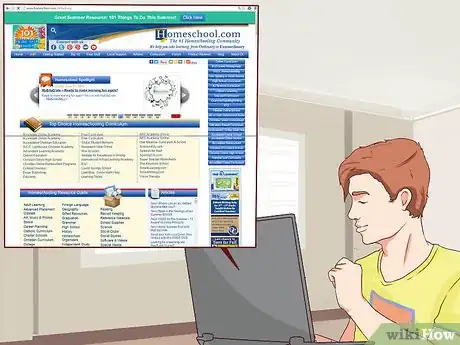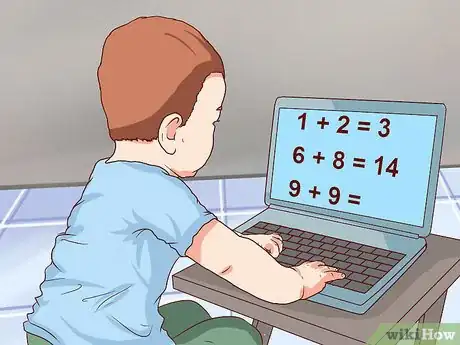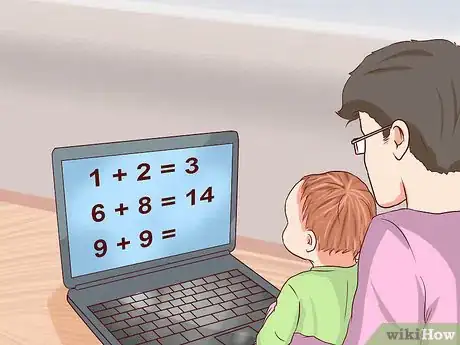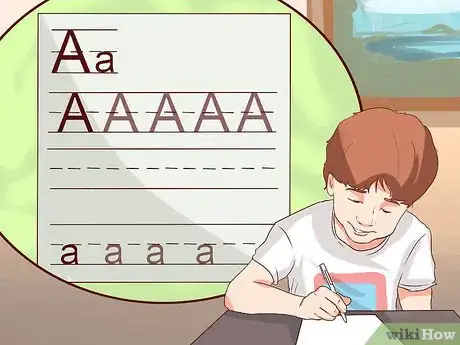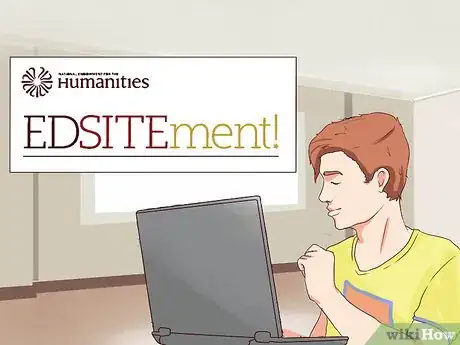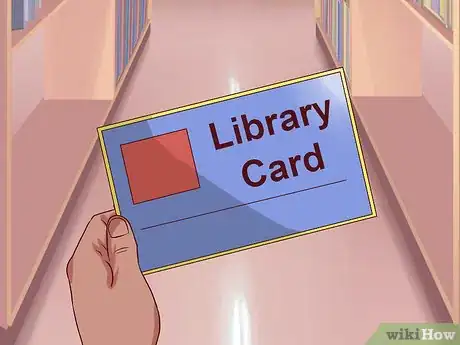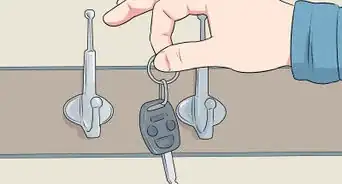This article was co-authored by Jake Adams. Jake Adams is an academic tutor and the owner of Simplifi EDU, a Santa Monica, California based online tutoring business offering learning resources and online tutors for academic subjects K-College, SAT & ACT prep, and college admissions applications. With over 14 years of professional tutoring experience, Jake is dedicated to providing his clients the very best online tutoring experience and access to a network of excellent undergraduate and graduate-level tutors from top colleges all over the nation. Jake holds a BS in International Business and Marketing from Pepperdine University.
There are 49 references cited in this article, which can be found at the bottom of the page.
This article has been viewed 11,662 times.
As a homeschool teacher, you probably have community resources available to you through online fora, church, or homeschool collectives. However, the need for good, targeted lesson plans, worksheets, games, and other educational material is endless. Many resource websites are difficult to navigate and offer material that is uneven in quality. Explore the resources of your town or city for books, textbooks, and affordable school supplies. Visit websites that offer targeted material to build curricula in math, language arts, and natural and social sciences.
Steps
Purchasing Quality Instructional Material
-
1Compare curricula. There are hundreds of approaches to home education, and this is reflected in the number of curricula you can find for your child. Even quick search online for specific ideas, such as "Christian homeschool curriculum" or "unschooling curriculum," will bring up countless results. To sort through your options, read what other homeschool parents think of different curricula at Home School Reviews.
- Get an idea of the scope of options with a general resource websites like Homeschool.com[1] and Home School Super Center.[2]
- Get advice on what curriculum might be best for you by querying Homeschool Advisor.[3] Use their website to send them an email explaining your goals for your child, and receive a personal response.
- When assessing potential curricula, look for statements of teaching philosophy as well as sample lessons.
- Check out curricula based on teaching methods you admire, such as Waldorf, Montessori, or Charlotte Mason.
- Get in touch with other homeschool families to find out what they have based their studies on. Use your state's education website, or the HSLDA.[4]
-
2Look into virtual classes. There are whole schools online, some free, and some tuition-funded. For a free, state-specific online school, try Connections Academy.[5] For online, tuition-free public school, check out Virginia Virtual Academy.[6] Private schools such as eHarvey and Internet Schools[7] also get good reviews.
- For distance-learning that is primarily print (rather than online), check out Oak Meadow. Tuition is moderate, and students in Vermont can attend for free.
- For an artificial intelligence-based adaptive online school, try ALEKS.[8]
- Some these programs, such as Oak Meadow, offer curricula that can be purchased in place of enrolling your child. Some offer classes that can be used to supplement a home school curriculum.
-
3Make sure your chosen program complies with local requirements. While choosing a curriculum or distance learning school, contact your school district to learn what you will need to do to comply with your school district and state requirements. Review the laws for the state you live in at the Home School Legal Defense Association to be sure any curriculum you choose answers the curricular requirements for your state.[9] Check to see if you need to teach certain subjects, and if you need to train your child for standardized tests.[10]
- If you will be moving, check the laws of each state (and even each school district) you will live in.
- If you are interested in "unschooling," or letting their child direct their education without a curriculum, contact other unschoolers in your area and ask what to watch out for.[11]
- Many unschoolers have found that detailed description of work done for each "subject" will suffice in place of curricula or grades.
Getting Math Lessons and Games Online for Free
-
1Get math teaching materials online. For worksheets on basic number recognition with your 4 to 5 year old, visit the KidZone website.[12] Math Fact Café has K-5th level worksheets and flashcards. Math Worksheets for Kids[13] has just that for K-6th graders. Xtramath has materials for elementary students and teachers, as well as an app for students to use on their own.[14] [15]
- For elementary and middle-school level math, get lessons, activities, and games at Illuminations.[16]
-
2Have your child teach herself or himself math. Khan Academy is a free website that allows students of all ages to work through problems at their own pace. Their adaptive exercises have an excellent reputation, and since the problems are randomly generated, it's an infinite resource. There are breakdowns of each problem available, and videos to help out.[17]
-
3
-
4Show your student educational math videos. If your kid works well with video instruction, Patrick JMT [25] makes helpful video tutorials for all levels of math. Khan Academy is also an excellent resource for video-learners.
Finding Language Arts Material Online for Free
-
1
-
2Make reading and writing central. For preschool-2nd grade level phonetic reading lessons, visit Starfall.[32] For K-8 students, visit Book Adventure, a virtual library where students can search books by topic, name, or ISBN. After they read, they can take a reading comprehension quiz to earn prizes.[33]
- For fun writing activities and lesson plans for kindergarten through 12th graders, try Young Writers Home Education Resources.[34] It's a UK site, so point out the spelling differences to your young writer!
-
3Don't forget handwriting. The internet can supply you with handwriting worksheets and style tips. For online lessons, animations, and extensive printables, try YoungMind Handwriting Lessons.[35] This is an excellent resource for print and cursive handwriting.
- Generate your own handwriting worksheets with Handwriting Worksheet Maker.[36]
-
4Play grammar, vocabulary, and spelling games. Anything your kid has to "practice, practice, practice" might as well be fun. Elementary students will enjoy the video games at Arcademic Skill Builders. FreeRice has Grammar and Vocabulary games at Elementary, Middle, and High School levels.
Learning Everything Online for Free
-
1Explore earth and space. The National Geographic has teaching materials and lesson plans for students of all ages.[39] . Find educational articles at Science.gov. For games and worksheets on Astronomy, geology, dinosaurs, and more, visit Kids Know It. [40]
- Print the worksheets at 123 Homeschool For Me to teach your 3-9 year old the science of the seasons, water cycles, temperature, weather graphing, clouds, wind, and disaster preparedness.[41]
- Supplement your visits to the zoo. If your homeschooler gets interested in taking bird walks, All About Birds is an excellent resource for bird identification.[42]
-
2Learn programming. Empower your elementary age students by teaching them Scratch, a beginner's programming language your kids can use to make stories, games, music, and art, while learning math, computation, and systematic reasoning.[43] Your students can work collaboratively with other children online, and share their art on the online gallery.
- Older students may enjoy the challenge of Code Year, an interactive website that seeks to teach the basics of computer programming over a year.[44]
-
3Find quality material for every topic. Visit the website of a well-funded, highly acclaimed media or educational institution for material on humanities, math, and science. Register with PBS to get access to their teaching website.[45] Get beautifully-curated science and history teaching material from the Smithsonian.[46]
- For all humanities needs, including foreign languages, visit EDSITEment.[47]
-
4Enroll your High School student in a MOOC. Advanced students may enjoy the challenge of taking college-level classes for free online. These classes offer high-quality, professionally designed collegiate and pre-collegiate material, while also giving your student the opportunity to be in conversation with other students, graduate TAs, and professors.
Exploring Community Resources
-
1Get a library card. If your town has a library, a book truck, a book exchange, or multiple branches of a library, get yourself and your child a card. Allow your children to pick out their own books, and do some picking out yourself to make sure they get high-quality literature on a variety of subjects. Make a ritual out of library trips. When your child is old enough to visit the library alone, give him or her the responsibility of keeping track of books and making sure they are returned on time.
- Sign up for classes, playtime, and reading circles at the library. Ask your librarian what resources the library offers for children like yours.
-
2Become a museum member. If you live near one or more museums, you may be able to buy a reciprocal membership card that allows you to visit museums in your town and in nearby cities. You can wander the whole museum on occasional visits, but, with membership, you can also make short targeted visits to address topics you are studying.
- Museums often offer art and art history classes, sometimes free, or sometimes free to members. Ask about resources for children at the Membership counter.
-
3Sign your kid up for after-school activities. Does your town have a community theater? How about a community garden? Is there a swimming pool for swimming lessons, and are there intra-mural sports teams that a homeschooled child can join? Help your students socialize and make friends by signing them up for community activities.[51]
-
4Get a teacher's ID. Active students quickly use up (and occasionally lose or break) paper, art supplies, workbooks, and even durable material like chalkboards and lab equipment. To save on supplies, get a teacher's ID. As a homeschooling guardian, you qualify for a teacher's discount at school supply stores and anywhere else that offers one. Your child may also be able to get a student ID.
- Some states will send these to you when you register as a homeschool teacher.
- If they don't, you can print one for free at the Home School Buyer's Co-op.[52]
-
5Go for affordable school supplies. Visit back-to-school sales for textbooks and classroom supplies. Buy reusable material. Instead of buying a game that can be played five times before it gets boring, buy material your student can use repeatedly for different
- Design money-saving curricula. Teach your children to plant and tend a garden, sew clothing, build and repair common objects, and cook, bake, and preserve.
- Science, math, history, literature and art studies can all be incorporated into these activities. Activities that are always a part of life are easy to connect with different areas of study.
- If you are studying a historical period and region, cook food from that time and place. Have your children sew costumes.
- Study science by learning how cooking and gardening actually work.
Expert Q&A
-
QuestionHow can I find resources for transitioning my child into a regular high school?
 Jake AdamsJake Adams is an academic tutor and the owner of Simplifi EDU, a Santa Monica, California based online tutoring business offering learning resources and online tutors for academic subjects K-College, SAT & ACT prep, and college admissions applications. With over 14 years of professional tutoring experience, Jake is dedicated to providing his clients the very best online tutoring experience and access to a network of excellent undergraduate and graduate-level tutors from top colleges all over the nation. Jake holds a BS in International Business and Marketing from Pepperdine University.
Jake AdamsJake Adams is an academic tutor and the owner of Simplifi EDU, a Santa Monica, California based online tutoring business offering learning resources and online tutors for academic subjects K-College, SAT & ACT prep, and college admissions applications. With over 14 years of professional tutoring experience, Jake is dedicated to providing his clients the very best online tutoring experience and access to a network of excellent undergraduate and graduate-level tutors from top colleges all over the nation. Jake holds a BS in International Business and Marketing from Pepperdine University.
Academic Tutor & Test Prep Specialist Contact the high schools you're looking at and ask them if they have any programs for this. Many schools have a bridge program where students take regular classes with a smaller group to get used to the classroom setting. If they don't have something like this, you can always sign them up for a club or summer program at the school so they have a chance to meet other students and get acquainted with the school.
Contact the high schools you're looking at and ask them if they have any programs for this. Many schools have a bridge program where students take regular classes with a smaller group to get used to the classroom setting. If they don't have something like this, you can always sign them up for a club or summer program at the school so they have a chance to meet other students and get acquainted with the school.
References
- ↑ http://www.homeschool.com/resources01/ElementarySchool.asp#
- ↑ http://www.homeschoolsupercenter.com/
- ↑ http://www.hsadvisor.com/
- ↑ http://www.hslda.org/orgs/default.aspx
- ↑ http://www.connectionsacademy.com/
- ↑ http://vava.k12.com/
- ↑ http://www.internethomeschool.com/
- ↑ https://www.aleks.com/
- ↑ http://www.hslda.org/hs/default.asp
- ↑ http://www.hslda.org/laws/default.asp
- ↑ http://www.hslda.org/orgs/default.aspx
- ↑ http://www.kidzone.ws/
- ↑ http://www.kidslearningstation.com/math/
- ↑ https://xtramath.org/#/home/index
- ↑ http://thepioneerwoman.com/homeschooling/free-online-educational-resources/
- ↑ http://illuminations.nctm.org/
- ↑ https://www.khanacademy.org/about
- ↑ https://itunes.apple.com/us/app/math-drills-lite/id302881372?mt=8
- ↑ https://www.ixl.com/math/algebra-1
- ↑ http://my.hrw.com/math06_07/nsmedia/tools/Algebra_Tiles/Algebra_Tiles.html
- ↑ http://www.arcademics.com/
- ↑ http://freerice.com/#/basic-math-pre-algebra/16870
- ↑ http://calculationnation.nctm.org/
- ↑ https://www.sumdog.com/user/sign_in
- ↑ http://patrickjmt.com/
- ↑ http://www.alphabet-soup.net/dir6/alphacolor.html
- ↑ http://homeschooling.about.com/od/langearlyread/ss/letteracolor.htm
- ↑ http://www.first-school.ws/theme/alphabet.htm
- ↑ http://thepioneerwoman.com/homeschooling/free-online-educational-resources/
- ↑ http://www.printactivities.com/Theme-Printables/Alphabet-Letter-Printables.html
- ↑ http://www.starfall.com/n/level-k/index/play.htm?f
- ↑ http://www.starfall.com/
- ↑ https://www.bookadventure.com/
- ↑ https://www.youngwriters.co.uk/home-education
- ↑ http://www.donnayoung.org/penmanship/index.htm
- ↑ http://www.handwritingworksheets.com/
- ↑ http://www.spellingcity.com/grade-level-lists.html
- ↑ http://worksheets.theteacherscorner.net/
- ↑ http://education.nationalgeographic.org/
- ↑ http://thepioneerwoman.com/homeschooling/free-online-educational-resources/
- ↑ http://www.123homeschool4me.com/2012/04/free-weather-unit-for-ages-3-9.html?m=1
- ↑ https://www.allaboutbirds.org/
- ↑ https://scratch.mit.edu/
- ↑ https://www.codecademy.com/learn
- ↑ http://www.pbslearningmedia.org/
- ↑ http://www.smithsonianeducation.org/students/
- ↑ http://edsitement.neh.gov/
- ↑ http://ocw.mit.edu/index.htm
- ↑ https://www.mooc-list.com/university-entity/university-pennsylvania?static=true
- ↑ https://www.mooc-list.com/university-entity/university-iowa?static=true
- ↑ Jake Adams. Academic Tutor & Test Prep Specialist. Expert Interview. 20 May 2020.
- ↑ http://www.homeschoolbuyersco-op.org/homeschool-id/
